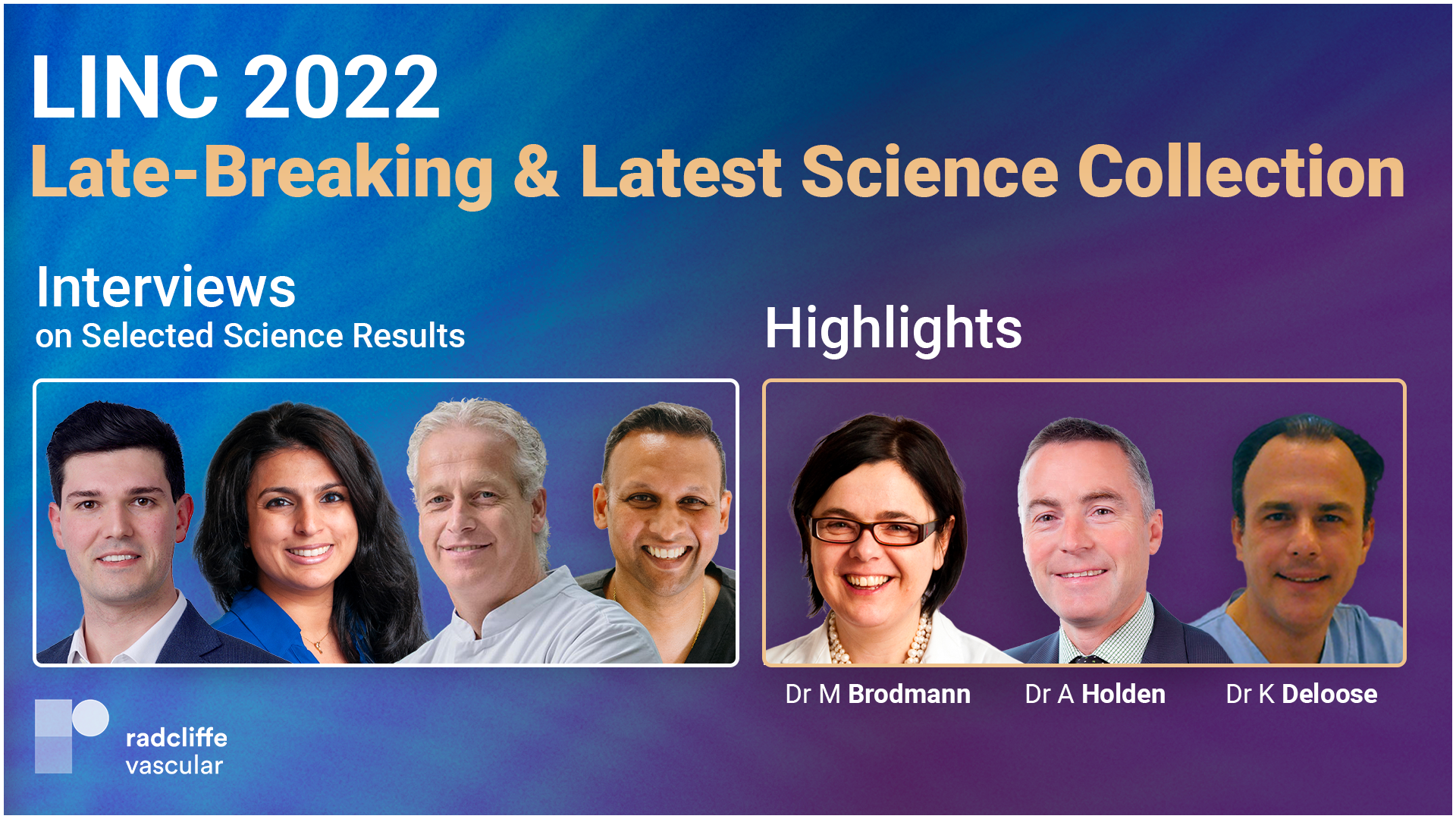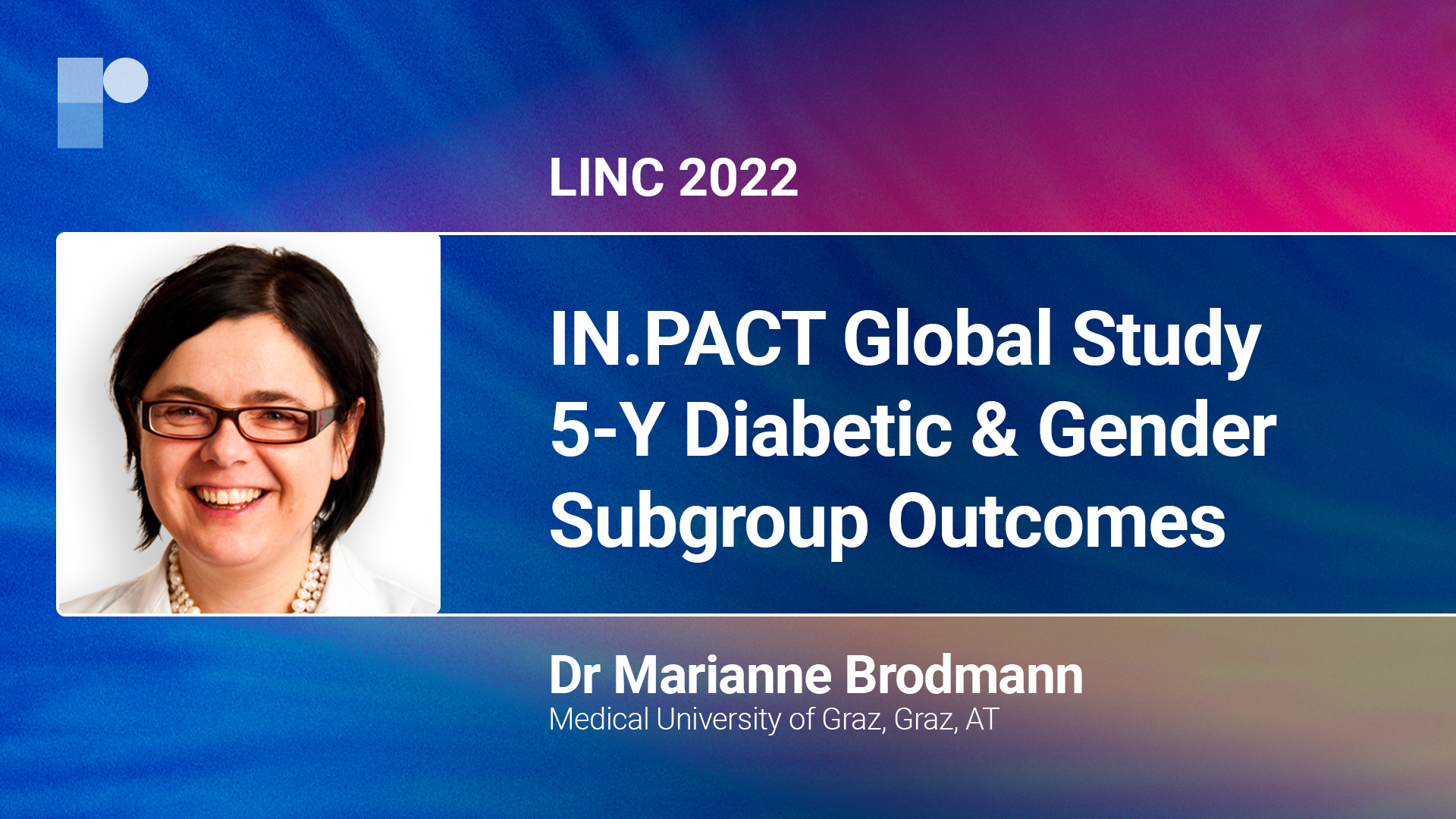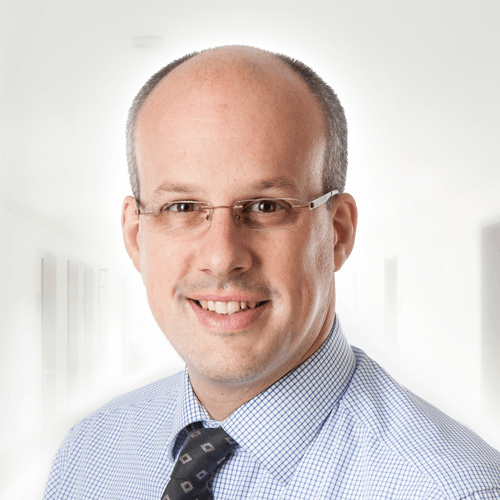LINC 2022: Late-breaking Science Video Collection
Published: 14 June 2022
-
Views:
 2853
2853
-
Likes:
 7
7
-
Views:
 2853
2853
-
Likes:
 7
7
-
 Up Next
Up Next -
 2m 44sPart 1 | Session 14 P-MAX Study with Dr Lichtenberg: ASPIREX®S Endovascular System
2m 44sPart 1 | Session 14 P-MAX Study with Dr Lichtenberg: ASPIREX®S Endovascular System -
 2m 15sPart 1 | Session 15 Cost-Effectiveness of Urea Excipient-Based DCBs for CLTI
2m 15sPart 1 | Session 15 Cost-Effectiveness of Urea Excipient-Based DCBs for CLTI -
 7m 57sPart 1 | Session 16 The CLariTI Study: Natural Progression of CLTI
7m 57sPart 1 | Session 16 The CLariTI Study: Natural Progression of CLTI -
 4m 19sPart 1 | Session 17 PAD in Germany 2009-2018 With Dr Rammos
4m 19sPart 1 | Session 17 PAD in Germany 2009-2018 With Dr Rammos -
 3m 26sPart 1 | Session 18 LINC 22: IN.PACT Global Study 5-Y Diabetic & Gender Subgroup Outcomes
3m 26sPart 1 | Session 18 LINC 22: IN.PACT Global Study 5-Y Diabetic & Gender Subgroup Outcomes -
 5m 20sPart 1 | Session 19 Patient Selection in NIVL and Preventing Migration in Venous Stenting
5m 20sPart 1 | Session 19 Patient Selection in NIVL and Preventing Migration in Venous Stenting
-
 4m 28sPart 1 | Session 1 GPX Embolic Device In Peripheral Applications Andrew Holden
4m 28sPart 1 | Session 1 GPX Embolic Device In Peripheral Applications Andrew Holden
-
 5m 32sPart 1 | Session 2 B-CLEAR Registry: Timing of TEVAR in Type B Aortic Dissection Erin Saricilar
5m 32sPart 1 | Session 2 B-CLEAR Registry: Timing of TEVAR in Type B Aortic Dissection Erin Saricilar
-
 4m 16sPart 1 | Session 3 Endovascular Angiography in Pts With Diabetic Foot Ulcers Using the Angiosome Model Erin Saricilar
4m 16sPart 1 | Session 3 Endovascular Angiography in Pts With Diabetic Foot Ulcers Using the Angiosome Model Erin Saricilar
-
 3m 58sPart 1 | Session 4 Cre8™ BTK Clinical Results in Complex BTK Patients Marc Sirvent
3m 58sPart 1 | Session 4 Cre8™ BTK Clinical Results in Complex BTK Patients Marc Sirvent
-
 4m 25sPart 1 | Session 5 AVF Formation with Adjuvant Endovascular Maturation Shannon Thomas
4m 25sPart 1 | Session 5 AVF Formation with Adjuvant Endovascular Maturation Shannon Thomas
-
 6m 16sPart 1 | Session 6 Long-Term Results of Supera in AVF Junta-Anastomosis Shannon Thomas
6m 16sPart 1 | Session 6 Long-Term Results of Supera in AVF Junta-Anastomosis Shannon Thomas
-
 6m 42sPart 1 | Session 7 SirPAD RCT: Sirolimus-Coated DCBs in Pts with PAD Stefano Barco
6m 42sPart 1 | Session 7 SirPAD RCT: Sirolimus-Coated DCBs in Pts with PAD Stefano Barco
-
 2m 39sPart 1 | Session 8 PRELUDE-BTK With Dr Lichtenberg: Serranator® PTA in Pts With PAD Michael Lichtenberg
2m 39sPart 1 | Session 8 PRELUDE-BTK With Dr Lichtenberg: Serranator® PTA in Pts With PAD Michael Lichtenberg
-
 4m 46sPart 1 | Session 9 PRIZER Study: Renzan™ Stent in Pts With PAD Koen Deloose
4m 46sPart 1 | Session 9 PRIZER Study: Renzan™ Stent in Pts With PAD Koen Deloose
-
 5m 16sPart 1 | Session 10 Auryon-SCE: Real-World Cohort Shows Promising Freedom from TLR at 6M Nicholas W Shammas
5m 16sPart 1 | Session 10 Auryon-SCE: Real-World Cohort Shows Promising Freedom from TLR at 6M Nicholas W Shammas
-
 5m 32sPart 1 | Session 11 JET-RANGER: Jetstream Atherectomy & DCB In Pts With Complex Calcified Lesions Nicholas W Shammas
5m 32sPart 1 | Session 11 JET-RANGER: Jetstream Atherectomy & DCB In Pts With Complex Calcified Lesions Nicholas W Shammas
-
 5m 43sPart 1 | Session 12 FLEX RCT: Micro-Incision prior to PTA in Pts With AVF Nicholas W Shammas
5m 43sPart 1 | Session 12 FLEX RCT: Micro-Incision prior to PTA in Pts With AVF Nicholas W Shammas
Overview
Short, accessible Expert Interviews will be available with select faculty focusing on the results, applicability, and impact on future research.
More from this programme
Part 1
Expert Interviews
Faculty Biographies

Michael Lichtenberg
Chief Medical Officer and Director of the Angiology Department and Vascular Center
Michael Lichtenberg, MD, FESC is the Chief Medical Officer and Director of the Angiology Department and Vascular Center at the Arnsberg Clinic in Arnsberg, Germany.
Dr. Lichtenberg earned his medical degree from the Heinrich-Heine Medical University of Dusseldorf, and also studied at the Tulane University School of Medicine in New Orleans, Louisiana and the Texas Heart Institute in Houston, Texas.
As esteemed Interventional Angiologist with 20 years of experience in endovascular interventions, Dr. Lichtenberg was elected to serve as Managing Director of the German Society for Angiology in 2017. In 2019, he was elected to serve as the society’s President.
Dr. Lichtenberg’s areas of clinical interest include deep venous intervention, peripheral artery disease, peripheral thrombosis and atherosclerosis.
In addition to his day-to-day work in interventional care, his main interest is the evaluation of new devices, techniques and procedures for the…
Transcript
Outline of the BioMimics 3D Stent Used in This Study
So this is a very unique stent design. It's a helical stent, which promotes swirling flow. And we know that swirling flow suppresses re-stenosis meaning with this stent, we can definitely work against re-stenosis and therefore it was very interesting to evaluate this swirling flow BioMimics stent in a multicenter prospective registry to see about the efficacy and safety for the stent.
Rationale
So it was a typical all-comers open registry with a multicenter inclusion meaning we included patients with different disease. There was a very open inclusion criteria catalogue, nearly no exclusion criteria.
Patient Population and Study Design
So we included patients with claudication, critical limb ischemia within the SFA and popliteal segment. And the very interesting thing is that so many centres took part in this trial and included more than 500 patients in a very short time in this registry. So I can say that I'm very proud of this group of physicians who included in this trial. And I really would say thank you as the principal investigator to all these participating centres for this trial.
Key Findings
So we found that the BioMimics stent was highly efficient in patients with short and long SFA and popliteal lesions, including CTOs, meaning patients with complex total occlusions, patients with severe calcification. We found a very high efficiency of the stent even for these most challenging patient cohort.
Take-Home Messages
So one aspect I would like to mention here, we allowed the centres to combine the stent with drug coated balloon angioplasty technique. We found no difference between DCB yes or no in conjunction with the stent, meaning the stent itself was so highly efficient that you don't even need a drug coated balloon. So therefore the conclusion of this registry is that this is a very efficient stent for many indication in patients with claudication and critical limb ischemia.
Next Steps
So the next step is to evaluate the stent even in the whole popliteal segment including popliteal segment two and three, and I'm looking forward to include also patient in such a prospective registry and trial.





